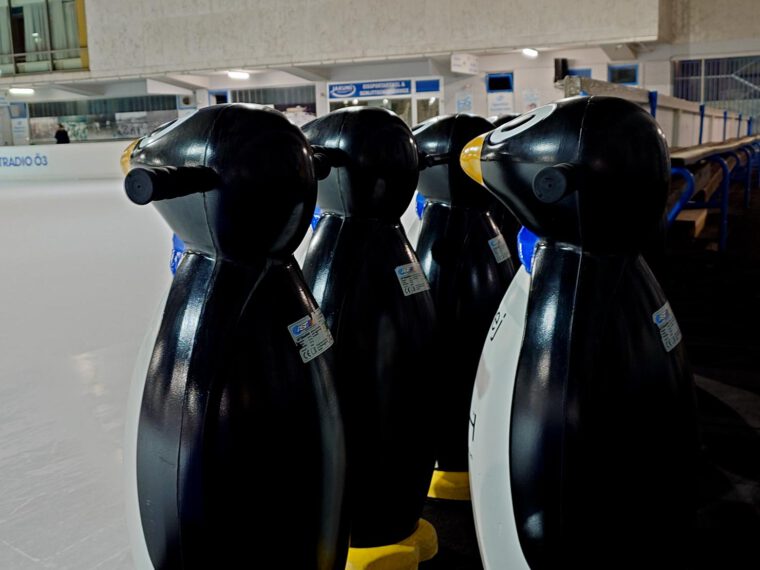
…mit wenig Gebackenem, zwei Restaurants (Angolo 22 und TIAN), Kino (Barbenheimer + Sex and Death in the Rational World of Defense Intellectuals), drei Büchern (Small Fires von Rebecca May Johnson, Imperium von Christian Kracht und Wenn ein Reisender in einer Winternacht von Italo Calvino) – und wie immer, den besten Links der letzten Wochen.
Seit dem letzten Zuckersüß habe ich Pfirsich-Choux gebacken (schockierend wenig!) und Eismasse aus Feigenblättern gemacht, zu deren Baum mich Carina aka Tafelkuratorin geleitet hat.
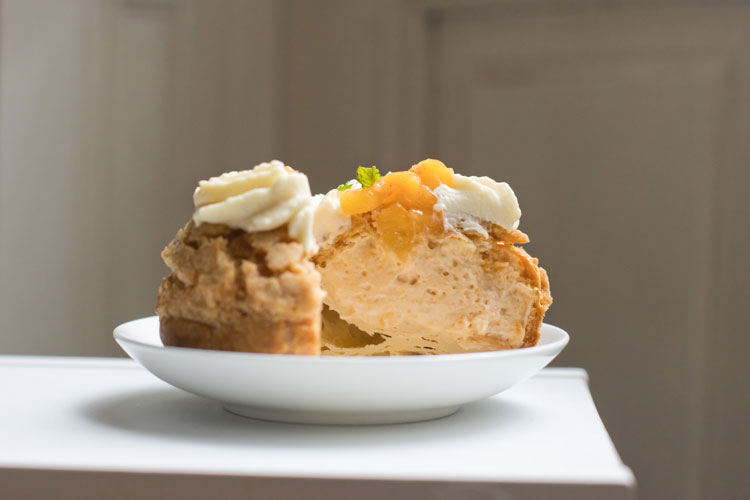

Ich habe Spicy Margaritas gemixt, im Vergleich zum letzten Mal waren die aber eher enttäuschend. Denn die Chilis, die ich gekauft habe, waren kaum scharf, da half nicht mal ein großzügiger Teelöffel getrockneter roter Chili im Sirup.
Gegessen

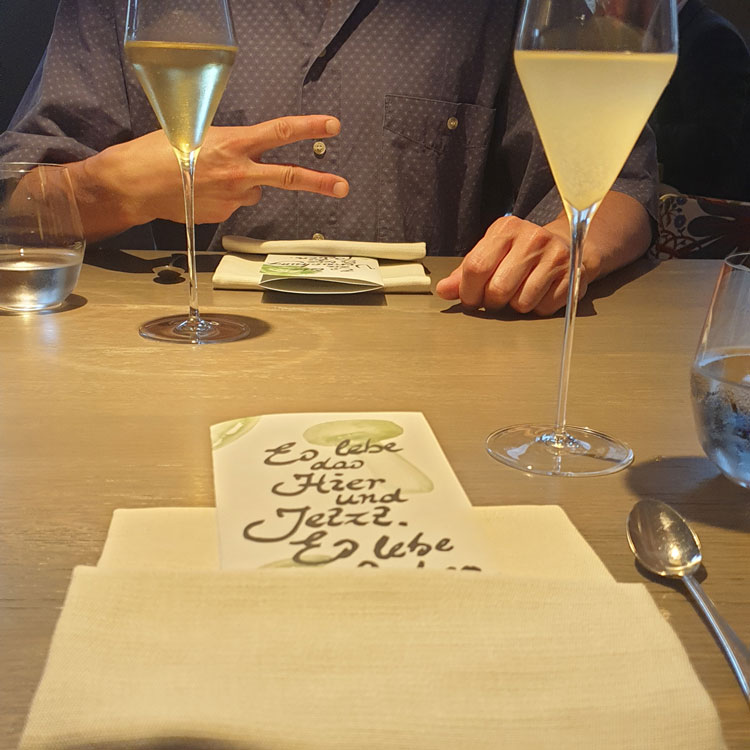

Eine Pizza Provola e Pepe (13,90€) bei Angolo 22 (1090), Mandel-Krokant- und Rosen-Himbeer-Eis (4€) bei Gefrorenes (1180), ziemlich gutes Bananeneis bei Leones (1080). Ein 8-Gänge Menü mit Getränkebegleitung im TIAN (bald mehr dazu). Knoblauch aus eigenem Anbau (s. Zuckersüß 435 über die Knoblauchverkostung, bei der ich die Knolle gekauft hatte).
Gesehen: Barbenheimer
Zuerst Oppenheimer, im überdimensionierten Cineplexx mit umwerfendem Soundsystem, dann Barbie im ausverkauften Votivkino. Und während mich Oppenheimer schon ganz gut unterhalten hat (ich warte drauf, dass irgendwer ein STS-Paper drüber schreibt, es geht ja irgendwann nur noch um das Verhältnis von Wissenschaft und Politik!*), hat mich Barbie ganz und gar begeistert. Der Film ist einfach so über drüber in jeder Hinsicht (wie RRR vergangenes Jahr!), und schlicht sehr witzig (selten war ich in einer Kinovorstellung, in der der ganze Saal so viel gelacht hat) – ich werde ihn mit Sicherheit noch öfter schauen. Und jetzt konnte ich auch endlich die ganzen Think Pieces mit Spoilern nachlesen, die ich schon wochenlang in offenen Tabs gehalten hatte, s. die ganzen Lieblingslinks unten.
*Das hat mich an „Sex and Death in the Rational World of Defense Intellectuals“ von Carol Cohn (1987) denken lassen, das ich daraufhin endlich gelesen habe – jemand aus meinem Studiengang hatte es mir vor zwei Jahren oder so als „das beste Paper überhaupt“ empfohlen. Darin analysiert Cohn (damals am „Center for Psychological Studies in the Nuclear Age“ der Harvard Medical School) den Diskurs bei einem Workshop zu Nuklearwaffen im Sommer 1984, und muss mit Entsetzen feststellen, dass sie die Sprache der defense intellectuals dort nicht nur lernt, sondern dadurch auch ihre Wahrnehmung verändert. Diese technostrategische Sprache beschreibt sie als hoch sexualisiert…
„I had naively believed that these men, at least in public, would appear to be aware of feminist critiques. If they had not changed their language, I thought that at least at some point in a long talk about ‚penetration aids‘, someone would suddenly look up, sligthy embarrassed to be caught in such blatant confirmation of feminist analyses of What’s Going On Here“
(Cohn, 1987, S. 693)
…misogyn…
„The nuclear scientists gave birth to male progeny with the ultimate power of violent domination over female Nature. The defense intellecturals‘ project is the creation of abstract formulations to control the forces the scientists created—and to participate thereby in their world-creating/destroying power.“
(Cohn, 1987, S. 701)
…religiös…
„The first atomic bomb test was called Trinity–the unity of the Father, the Son, and the Holy Spirit, the male forces of Creation. The imagery is echoed in the language of the physicists who worked on the bomb and witnessed the test: ‚It was as though we stood at the first day of creation.‘ Robert Oppenheimer thought of Krishna’s words to Arjuna in the Bhagavad Gita: ‚I am become Death, the Shatterer of Worlds'“
(Cohn, 1987, S. 702)
und völlig inkompatibel mit dem Konzept Frieden.:
„To speak it [peace] is immediately to brand oneself as a soft-headed activist instead of an expert, a professional to be taken seriously.
(Cohn, 1987, S. 708)
Die Legitimation der defense intellectuals – basierend auf ihrer technischen Expertise und Emotionslosigkeit – zerlegte sich damit von selbst.
Und was hat das jetzt mit Oppenheimer zu tun? Nun, ich weiß auch nicht genau (wie schön, dass ich hier in meinem Blog einfach ziellos zitieren/drauflosschreiben kann!). Carol Cohn erwähnt Lewis Strauss, den Vorsitzenden der Atomenergie-Kommission (gespielt von Robert Downey Jr) in einer Fußnote, weil der die H-Bombe als besonders „human“ (weil „sauberer“) einschätzte. Und anders als bei diesem Workshop 1984 wird im Film definitiv keine Emotionslosigkeit vorgetäuscht, denn sonst wärs auch keine Gschicht.
Cohn, C. (1987). Sex and Death in the Rational World of Defense Intellectuals. Signs, 12(4), 687–718.
Gestrickt
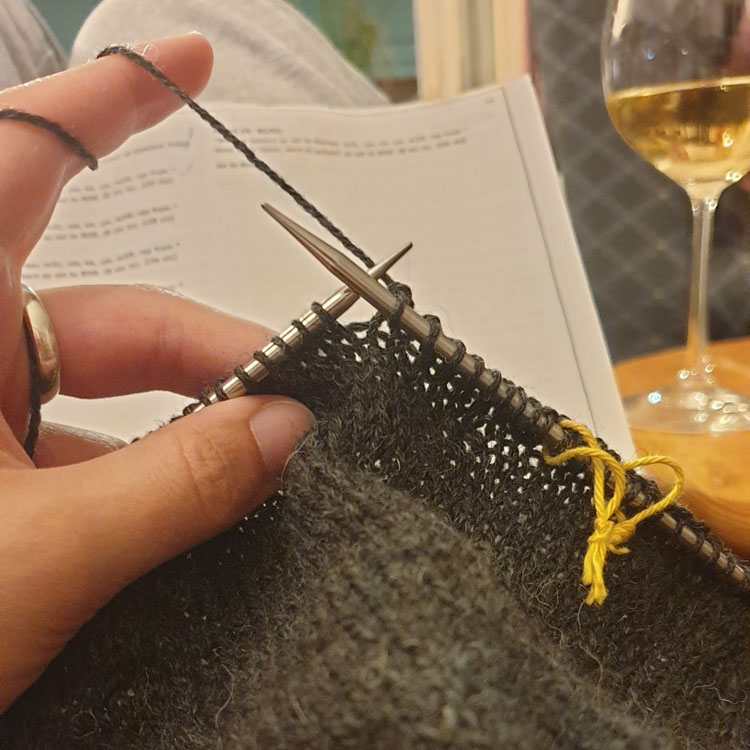
Weiter an meinem Rumble Raglan, das ganz einfarbig und nur glatt rechts schon ein bisschen fad zu arbeiten ist. Ich mach mir noch eine bunte Variante!
Gelesen
Fast bis zum Ende von Small Fires. An Epic in the Kitchen von Rebecca May Johnson, ein Buch, das geschrieben ist wie kein anderes, das ich kenne. Ein paar Kapitel Imperium von Christian Kracht, über einen fanatisch-spirituellen, kokosnuss-verehrenden Aussteiger in Deutsch-Neuguinea (s. a.: GAG141: Die kurze Geschichte des Kokovorismus), allerdings überzeugt mich der Roman nicht recht. Die ersten paar Seiten von Wenn ein Reisender in einer Winternacht von Italo Calvino, auf Empfehlung eines Freunds.
Veröffentlicht
Im Blog: Hafer-Walnuss-Marillen-Eis-Sandwiches, Pfirsich-Choux
Anderswo: nix (Ferien!)
Über mich: Max Miller, der im Jänner als erstes über mich und Ö1 geschrieben hatte (s. Ö1 – vorbei), hat mich für einen Text im aktuellen profil interviewt.
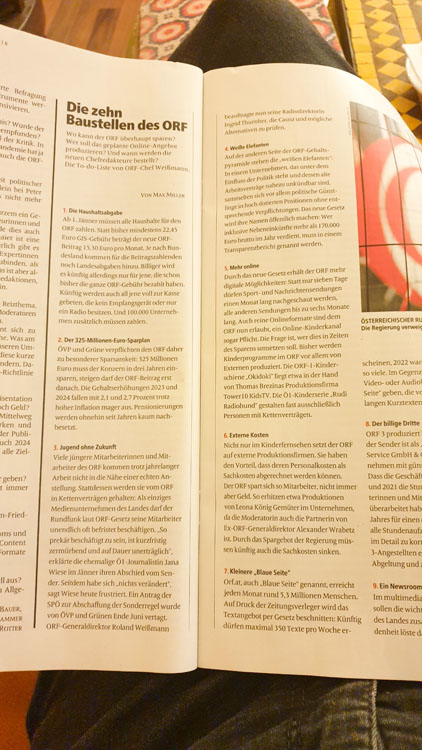
Hier folgen meine liebsten Links der letzten Woche.
Rezepte
Cacao nib buckwheat sables with espresso sugar – Delicious (Thalia Ho)
Thalia Ho’s Wild Sweetness hätte ich immer noch gern, fällt mir da auf.
Kitchen Project #108: To preserve or not to preserve
Ein allumfassender Guide zum Marmelade- und Kompott-Kochen. Weintrauben-Marmelade (nicht Gelee!) würd ich gern ausprobieren.
Grape jelly is more common, at least in North America, but personally, I love the texture of jammy skins suspended in jellied pulp that is jam. True, it can be a royal pain to deal with a seedy batch of grapes—after washing and stemming, you need to squeeze each grape to separate the skin from the pulp. The latter, once simmered with a splash of water, will relax in the heat and prise away from the pesky seeds, enabling you to strain them off. The pulp can then be reunited with the flavorful skins and made into jam. It’s a bit of work, but for that reason I only make a few much-cherished jars every year from the unknown dark purple varietal that grows in my friend’s yard.
Texte
Japan 2023 – Logbuch — Trois Etoiles
Die Texte von Julien Walther machen mich zuverlässig fertig – diese Reise klingt z.B. so als kostete sie ein durchschnittliches Jahresgehalt – und trotzdem lese ich sie so gerne, denn sie geben detaillierte Einblicke in Restaurants, in denen ich wohl nie essen werde.
Einige Stunden später fliege ich über Qusar, Aserbaidaschan, in 35.000 Fuß Höhe. Es sind laut Anzeige noch 7 593 km bis nach Tokio. Das Essen an Bord ist okay, natürlich, man will sich nicht beklagen. Kaviar und so. Andererseits ist das für eine First Class alles ziemlich enttäuschend. Die Vorspeisen waren kaum essbar; die Weinkarte ist so drittklassig wie eh und je. Nein, das sind keine ernsten Probleme, aber dennoch Probleme des Premium-Produkts von Lufthansa.
115 Degrees, Las Vegas Strip – The Paris Review (via Joy the Baker)
Meg Bernhard über Alltag/Urlaub in der Klimakrise.
Outside, at the Bellagio fountain, a thunderous sound erupted. Arcs of water sashayed through the air as onlookers took videos of the show. According to the Bellagio’s website, the resort sources the fountain’s water from wells, not from Lake Mead or the Colorado River, which are in drought. Twelve million of the fountain’s twenty-two million gallons of water evaporate each year.
Elsewhere on the Strip, machines sprayed pedestrian walkways with mist. Air conditioning poured out from restaurants. In the shade I almost forgot I was in the Mojave Desert.
A man with a cardboard sign reading GOD BLESS US looked parched, so I gave him my water bottle. Now I was out, so I went to the Cosmo’s Starbucks and asked if I could grab a cup of tap water, and by grab I meant can I have one for free. The barista told me that, after tax, the water cup came out to $1.08. I wouldn’t be there long, I reasoned, so I left without water.
“Do Wines Make Women Giggly?” On Sexism in Wine Culture – Lithub.com
Das Buch zu diesem Text von Meg Bernhard steht nun auf meiner zu-lesen-Liste.
Acidity, residual sugar—knowing these things feels powerful. So does knowing about the land, about its rocks and soil, its wind patterns, its slopes. They’re two different but related epistemologies of wine: the structural and the ecological, the first primarily stemming from cellar work and the second from vineyard work. In the social world of wine drinking, the pursuit of that first set of knowledge has spawned a culture of performativity, one that often suggests certain people are more authoritative than others.
Everything You Need to Know About Wine Right Now | PUNCH
Dieses Dossier/Feature/wie auch immer ist so schön gemacht!
Wine right now is fluid, changeable, full of energy. Even the very definition of what wine is, or can be, is content with being under construction. That’s why we’ve decided to take a yearly snapshot of the producers, trends, ideas and even objects that are shaping wine right now——to help us better understand this moment and, over time, tell the story of modern wine culture.
Pit of Despair, by Kate Lebo – Harpers.org
Ich weiß nicht mehr, wie ich zu diesem Text gekommen bin, er gefällt mir jedenfalls
I started a new July ritual: make maraschino cherries the old-fashioned way, free of food coloring and calcium salts, preserved for cocktails year-round. I start with four or five pounds of fresh sour cherries and use a real cherry pitter, a contraption that screws onto a standard canning jar and catches the pits. My husband Sam and I drink Manhattans while we pit, served his favorite way: on the rocks with the previous year’s maraschino cherries, never citrus. I combine the pitted cherries with a bottle of Luxardo maraschino liqueur and heat them briefly, because I read somewhere that I’m supposed to do that. Then I seal them in jars with some of the pits to add a dash of benzaldehyde. Over the rest of July and part of August, the maraschinos’ candy red will fade to a serious mauve. That’s how we know they’re ready, globes of liqueur-logged fruit that taste of what they once held safe at their centers. Summer glow and fair warning, true cherry and almost almond, promise and poison from deep in their seeds.
Antifascist Pasta, a Recipe and a Story of Resistance – Emiko Davies
Essen, sehr politisch, mit Feiertag am 25. Juli:
The Fascist government (in fact Marinetti and Mussolini were friends) supported the anti-pasta stance because it suited their own propaganda as pasta being unsuitable for good, strong soldiers and unpatriotic because Italy relied heavily on importing wheat from abroad for pasta (still today this is true***) and part of Mussolini’s Fascist agenda was making Italy a completely self-sufficient nation, an island that did not need help from foreigners.
On U.S. Cuisine – From the Desk of Alicia Kennedy
Essen, politisch, Teil 2.
The notion that these folks would be eating non-ideological food is interesting, and it’s one that continues to be a perspective in the U.S.: It’s ideology to go to the farmers’ market; it’s not ideology to eat a hot dog. To be in poverty or marginalized, this well-intentioned notion suggests, is to have no choice, no access—is this not a violent erasure of agency? Why isn’t that ideological?
The Secret History of Why Soda Companies Switched From Sugar to High-Fructose Corn Syrup – Mother Jones (via Alicia Kennedy)
Essen, politisch, Teil 3.
But while corn subsidies played a role in the story, another, less-famous government intervention likely played an even bigger role. The tale—which I first saw laid out in Richard Manning’s excellent 2005 book Against the Grain—started in the early 1971, when a massive, surprise sale of US grain to the Soviet Union triggered a boom in corn prices, which in turn led to a massive ramp-up in corn planting. By the mid-’70s, corn prices had returned to earth; but buoyed by subsidies, farmers kept planting “fencerow to fencerow,” as then-department of agriculture chief Earl Butz put it. The result: massive overproduction of corn. (The current corn glut, on the heels of the ethanol-driven boom of 2006-2012, followed a similar pattern.) Corn-processing giants like Archer Daniels Midland had access to all the cheap corn they could ever want, but could only make a profit with it if they could find new markets for corn products. The company came up with two big ideas: ethanol, designed to disrupt the massive gasoline market; and high-fructose corn syrup, which the company hoped would break up Big Sugar’s hold on the soda industry.
Greta Gerwig’s Barbie Dream Job – NYT (via Today in Tabs)
Barbie ist jetzt endgültig nicht mehr Spielzeug sondern einfach IP…
Mattel has previously made the kind of predictable entertainments a toy company makes — straightforward pro-Barbie material like successful animated shows for kids. But when Kreiz took charge, that kind of propaganda was not working broadly enough. He and his colleagues now say the same things over and over. That Barbie is not a toy; she is a pop-culture icon. That she does not have customers; she has fans. If you take that seriously, it outlines how to proceed. An icon who wants to stay at the center of the culture can’t keep putting out the same old thing and suing anyone who riffs on it. She has to stay current.
“Barbie Girl”: The Aqua song’s journey from Mattel lawsuits to the movie’s soundtrack. – Slate.com
Wie sich Zeiten ändern…
Frankly, Minaj’s Barbz fan army would probably have pitched a fit if their queen were not permitted to align with the movie soundtrack, so perhaps Mattel’s greenlight was preordained. But nonetheless, 14 years after Mattel buried the hatchet and brought Aqua under the tent, “Barbie World” is further evidence of the toymaker’s savvy, 21st -century we-get-the-joke approach. It is hard to imagine the starchier Mattel of the late ’90s approving Minaj lyrics like “That pussy so cold, we just chillin’ out” or Ice Spice’s “I give the box with no shoes in it.”
Barbie Answers Oppenheimer – Culture Study
Mehr als ein Film, argumentiert Anne Helen Petersen:
But it’s more. Barbie understands itself as the main event. Not of the week, but of the summer. It has, as the kids say, REAL MAIN CHARACTER ENERGY. Which makes sense: the Barbies aren’t just the main characters of this film, but of the whole world. They live in a matriarchy where the levers of power are controlled by women. Men are superfluous, unskilled, and primarily eye candy; the very idea that they would have an inner life is a punchline in and of itself. And if that sounds mean or heartless, imagine how it feels when it’s only slightly more sublimated in all the films where men’s perspective rules.
That’s the joke, of course — and the punching heart of the film. Barbie doesn’t argue that the world should look like Barbie’s world so much as dare you to find offense in it, to just try and make the argument that a judicial branch with a token man is somehow offensive. It’s smart and winking about the relationship between us and the products that become overdetermined with meaning, value, and play; it pokes at the absurdities of masculinity with the sort of familiarity of someone who’s actually known a lot of men, not just known about the idea of men.
Barbie Has Cellulite (But You Don’t Have To) – The Unpublishable
Über die Dissonanz des Barbie-Marketing-Universums.
From the story alone — Barbie leaves Barbie Land after discovering she’s a “less-than-perfect doll” and journeys to the human world to “find true happiness” — it’s clear that writer-director Greta Gerwig aims to subvert much of what the Mattel toy symbolizes in American culture: conformity, compliance, the objectification of women and girls. The issue, as it was with Don’t Worry Darling and Blonde, is that you cannot subvert the politics of Barbie while preserving the beauty standards of Barbie. The beauty standards are the politics, or at least part of them. (And yes, sure, Gerwig’s cast is diverse — but it’s diverse in the seemingly expansive but ultimately narrow way of modern industry marketing, which embraces every body as a means to position every body as needing correction: white skin and brown skin, but always clear skin; cis bodies and trans bodies, but always hairless bodies; red lips and bare lips, but always full lips — parting to reveal perfectly straight, perfectly white teeth; younger actresses and older actresses, but always eerily ageless actresses.)
The Class Politics of Instagram Face – Tablet Magazine (via Culture)
Schönheits-OPs als Massenphänomen.
Distinction. Good face, like good taste, has a direction: downward. The success of Instagram Face, its ubiquity, isn’t the start of cyborg aesthetics. It’s the end of it. Because what might save us from such apocalyptic beauty is something almost too ugly to say out loud: When in history have rich women ever wanted to look like regular ones?
Kylie Jenner is widely considered the face that launched a thousand fillers. The reality star did her lips in 2014, and seemingly everything else soon after. If you believe social media, the model Bella Hadid covered Carla Bruni’s features like a singer does another’s song. Emily Ratajkowski, the extended Kardashian cast: Each began to modify herself until as if in some joint experiment they arrived at an aesthetic congruence. Their platonic ideal was an ethnically ambiguous woman, neotenous from the neck up, hypersexual from the neck down. Her whole schtick is that she looks unlikely to know who Plato is. That way when Emily, who is both a model and an essayist, seems likely to have read him, she gets not only your desire but also the delicious gotcha of having been misjudged.
Audio/Video
I Can See You – Taylor Swift
Ich bin wirklich kein Swiftie, deswegen hatte ich nicht mitbekommen, dass sie ein paar Songs From The Vault (also solche, die für ein früheres Album geschrieben worden waren, dann aber doch nicht drauf gelandet sind) veröffentlicht hat. Diesem hier bin ich zufällig begegnet und seitdem bekomme ich ihn nicht mehr aus dem Kopf.
Heaux Tales – Jazmine Sullivan
Lange nicht gehört, so ein schönes Album.
Les Couilles sur la table: Tuer les femmes : une histoire mondiale (1/2)
Bis zu diesem Podcast war mir der begriffliche Unterschied zwischen Femizid und Feminizid (explizit systematisch) nicht bekannt. Historikerin Christelle Taraud stellt heutige Frauenmorde in Referenz auf Silvia Federici außerdem in direkte Verbindung mit den Hexenverbrennungen der frühen Moderne, mir ebenfalls neu.
DOI – Denominazione di Origine Inventata: Prima puntata – Il pane e la tavola on Apple Podcasts
Gestern habe ich mich durch die gesamte erste Staffel dieses Podcasts gehört, der allerlei Mythen der italienischen Küche debunked. Geschichtsprofessor Alberto Grandi erklärt z.B., dass zu Tisch essen für die meisten Italiener_innen historisch ein Sonderfall war, weil sie ihre Tage eher am Feld verbracht haben, dass Mussolini was gegen Pasta hatte, Reis lange Zeit nur Suppeneinlage war und Arancini deswegen ein eher moderenes Phänomen sind. Super interessant!
158 The Case of the Missing Hit | Reply All
Wurde mir beim Ö3 Podcastfestival im Juni von einem der ACB Stories Producer als seine „all time favorite“ Podcastfolge empfohlen. So weit würde ich zwar nicht gehen, aber: WAS für eine Story! Und der Aufwand, diese Folge zu produzieren, wow!
The Girl Called Pocahontas – ABC Radio National
tl;dr: Disney erzählt eine reingewaschene heile-Welt-Story statt der grausamen Lebensgeschichte der echten Matoaka, wie das Figurenvorbild von Pocahontas hieß. Zu Wort kommen im Podcast auch die Leute hinter „Missing Matoaka“, die einen alternativen Audiotrack zum Disneyfilm produziert haben, der sich an den historischen Fakten orientiert.
Fashion Without Capitalism| Articles Of Interest
Über den ungarischen Modedesigner Tamás Király, der in den 1980ern mit avantgardistischen Entwürfen für Aufsehen sorgte. Hier im Substack zum Podcast (??) sind ein paar Fotos zu sehen, u.a. von einer Schau im Hamburger Bahnhof (heute ein Museum, s. Zuckersüß 419) in Berlin 1988.
Sonst So
Robin Sloan’s Newsletter
Ich hatte nicht mitbekommen, dass Robin Sloan neben Büchern und einem Blog auch einen Newsletter mit Linkempfehlungen schreibt – sofort abonniert.
Maya.land
Der Vibe dieser Webseite, wow.
Backkatalog


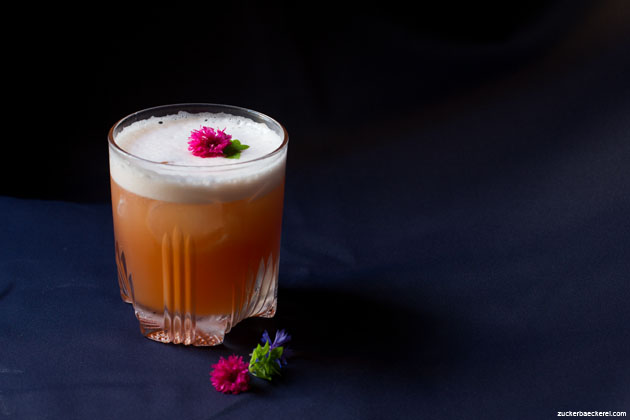






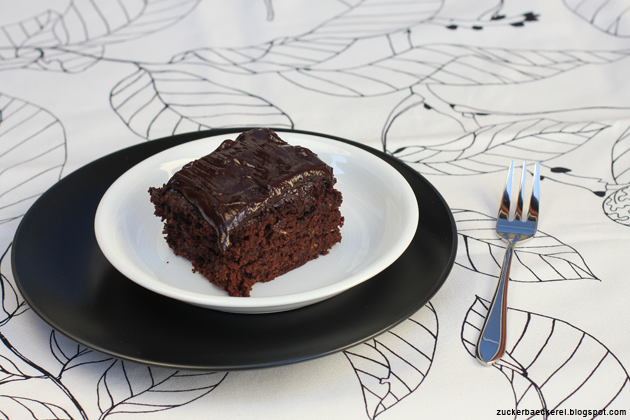
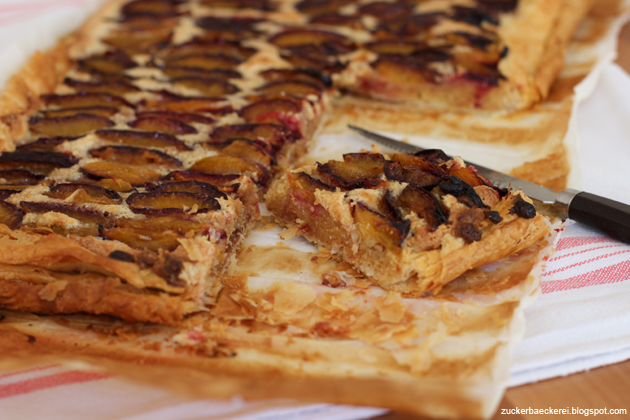


- 2022: Brombeer-Streusel-Schnitten
- 2021: Lorbeer-Vanille-Eis
- 2020: Jungle Bird
- 2019: Marillen-Mascarpone-Kuchen
- 2018: Schokocreme-Tarte mit Meringue und Orangenmarmelade
- 2017: Eine Reise in die USA, Pt. 1: NY
- 2016: Beeren-Muffins
- 2015: Orangen-Ingwer-Cookies
- 2014: Neues aus Marokko
- 2013: Zucchini-Brownies
- 2012: Zwetschgen-Frangipane-Tarte
- 2011:Peanut Butter Chocolate Chip Cupcakes mit Schokofrosting
- 2010: „Best cocoa brownies“

 Hi, ich bin Jana. Seit 2009 veröffentliche ich hier wöchentlich Rezepte, Reiseberichte, Restaurantempfehlungen (meistens in Wien), Linktipps und alles, was ich sonst noch spannend finde. Ich arbeite als Podcastproduzentin und freie Kulinarikjournalistin. Lies mehr über mich und die Zuckerbäckerei auf der
Hi, ich bin Jana. Seit 2009 veröffentliche ich hier wöchentlich Rezepte, Reiseberichte, Restaurantempfehlungen (meistens in Wien), Linktipps und alles, was ich sonst noch spannend finde. Ich arbeite als Podcastproduzentin und freie Kulinarikjournalistin. Lies mehr über mich und die Zuckerbäckerei auf der 

 Über den Tellerrand
Über den Tellerrand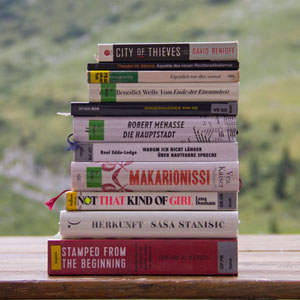 Bücher
Bücher Zuckersüß
Zuckersüß
